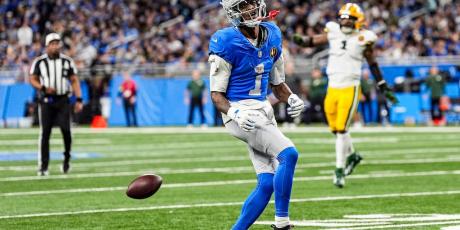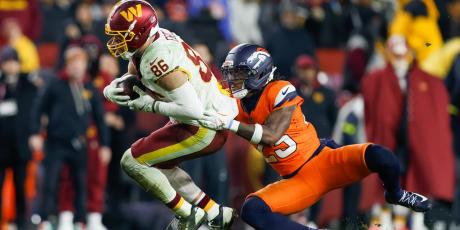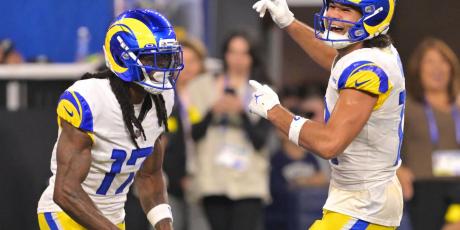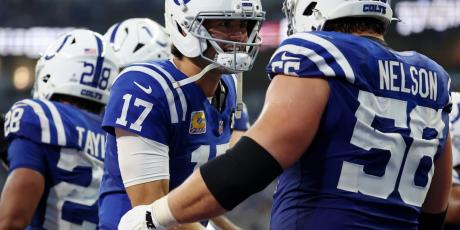Chris Godwin: Championship Ceiling or Disaster?
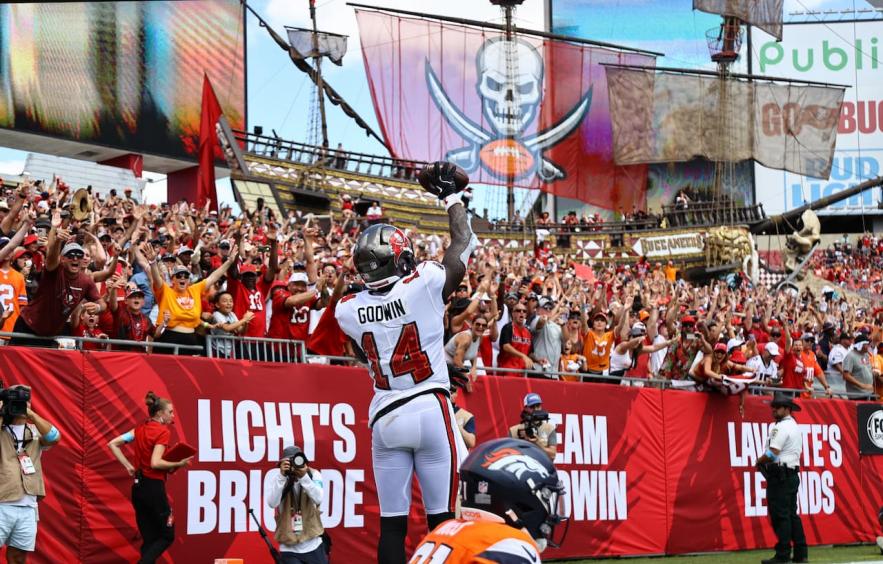
The 2024 season for Chris Godwin was not what we all expected it would be after the first month and a half of the season. His dislocated ankle and fractured fibula robbed us all of an impressive performance. Through seven games, Godwin was on pace for 121 catches, 1,399 yards, and 12 touchdowns. As we head into the 2025 season, Godwin finds himself being drafted at 67.8 ADP as WR37, creating one of 2025's most divisive value propositions. The question facing fantasy managers today is whether or not you can afford to find out if Godwin will return to his elite form.
Click here for more 2025 Player Profiles!

DraftKings is giving ALL customers a can't-miss offer for Best Ball: Draft One, Get One! Enter a lineup in the $15 Million Best Ball Contest for just $20, and you'll score another Best Ball ticket to play FREE for a share of $15 million—giving you a second shot to win big!
The Case for Championship Upside
Godwin presents undeniable appeal for fantasy managers with their eyes on the fantasy playoffs. He was en route to an historic season by all accounts. His 19+ PPR points per game during that beginning stretch of the season is exactly the type of production fantasy managers are looking for. Going from potential league leader in receptions to only seven games worth of production was quite the rug pull.
Godwin, doing most of his damage from the slot, had really formed a connection with Baker Mayfield before the injury that took him out. His perfect 8-for-8 performance in the season opener and his 11-catch, 125-yard, 2-TD explosion against New Orleans demonstrated the type of target hog that Godwin was becoming in the first third of the season.
Tampa Bay's three-year, $66 million contract extension with $44 million guaranteed sends a clear organizational message about Godwin's value. If Godwin returns to even 90% of his pre-injury form by midseason, his current ADP seems like a pretty significant discount off of his true ceiling.
The Case Against: Early-Season Disaster
The downside is that his slow return tanks the early part of your fantasy squad's year and provides a hole that needs to be dug out from. Recent reports indicate he's still rehabbing inside the facility with no on-field work during minicamp, while head coach Todd Bowles' comment that they're "hoping" Godwin is ready for Week 1 sounds far from definitive. There doesn't seem to be much confidence in the building at the current moment.
It's highly unlikely that Godwin is at full-strength from Week 1. The question becomes, what does that mean? Players returning from major ankle surgeries often deal with lingering discomfort, reduced mobility, and hesitation that can last months. Fantasy managers will be hoping for a return to full-strength sometime in October but that's a tough pill to swallow at his ADP.
The addition of first-round pick Emeka Egbuka compounds these concerns significantly. While the team claims Egbuka's selection wasn't injury-related, drafting a slot receiver with similar skills to Godwin in the first round speaks louder than organizational spin.
Godwin's draft position forces fantasy managers into a tough position. At WR37, he's being selected as a presumptive starter, but the current status doesn't reflect that. Teams drafting Godwin are essentially using a 6th-round pick on a player who may require bench stashing for the first month or more of the season, creating difficulty with lineups and roster construction.
The Egbuka Variable Changes Everything
Egbuka looks like he can be a contributor from day one with exceptional route-running ability. If Godwin misses significant time early in the season, Egbuka will have every opportunity to establish himself as a favorite of Mayfield.
The Buccaneers' historical ability to support multiple fantasy-relevant receivers offers some hope, but Evans and Godwin have occupied such different roles that it isn't a perfect analogy. Egbuka and Godwin's similar profiles suggest more direct competition for targets.
Even more concerning is the possibility that Egbuka's presence provides Tampa Bay with the luxury of being cautious with Godwin's return. The team can afford to let Godwin work his way back slowly instead of needing to rush him back. This patient approach may be a positive for the team and reality football but could be a negative for Godwin's early-season fantasy value.
Draft Strategy: Two Wildly Different Approaches
Godwin's unique risk-reward profile essentially forces fantasy managers to choose between two completely different drafting philosophies, each with compelling arguments.
The Championship Bet: Draft Godwin as your WR3 with the understanding that your team may struggle early but could dominate late. This approach requires exceptional depth at receiver and the roster flexibility to weather 4-6 weeks of suboptimal production. He seems like a good fit on a Zero-RB type team where you know you'll have starters at the position anyway. You're relying on hitting on those late-round running backs anyway, and you can assume that you'll also see your receiver corps strengthen as the season moves forward, also.
The Reliability Play: Avoid Godwin entirely and use that 6th-round pick on a more dependable option like Jordan Addison, Jauan Jennings, or Chris Olave—players with clearer early-season roles and fewer health concerns. This approach prioritizes consistent weekly production over boom-bust potential and recognizes that fantasy seasons are often lost early rather than won late.
The middle ground—drafting Godwin and expecting reliable Week 1 production—represents the worst of both approaches. His ADP suggests the market believes he'll be a consistent contributor when we look back on the season, but the injury evidence strongly contradicts that optimism for the early season.
The Verdict: Know Your Risk Tolerance
Chris Godwin at WR37 isn't mispriced—it's correctly polarizing. For championship-focused teams with strong early-season rosters, his elite ceiling justifies the risk. For managers seeking consistent weekly production, his injury uncertainty makes him undraftable at the current cost.
The key is honest self-assessment of your team construction and risk tolerance. If you can afford to stash an elite talent while he recovers, Godwin offers legitimate league-winning upside. If you need immediate production from your 6th-round pick, there are far safer options available.
The Bottom Line
- Elite ceiling remains if healthy
- Pre-injury production of 19.7 PPR points per game and pace for 121 catches represents legitimate WR1 upside for teams that can wait for his return to full strength.
- Early-season availability highly questionable
- Still rehabbing inside with no on-field work and team only "hoping" for Week 1, suggesting fantasy managers should plan for extended absence or limited effectiveness.
- Egbuka creates competition
- First-round rookie with similar slot skills could establish himself during any Godwin absence, altering target distribution even when veteran returns.
- ADP reflects uncertainty, not value
- Being drafted as WR37 appropriately prices in the risk but forces managers to choose between championship upside and early-season reliability.
If he slips into the 7th or later because your league mates are concerned, that's the time to pounce regardless of how your team is coming together.


